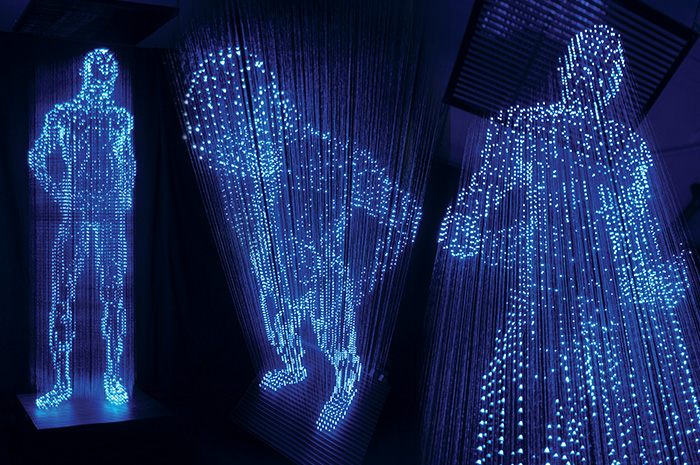Blue LED Beams Nobel Fame
Light-emitting diodes illuminate everything from traffic signals to smartphones to shimmering sculptures like this one, called “No Shadow,” by Japanese industrial design engineer turned artist Makoto Tojiki. But the researchers whose early 1990s breakthrough – a blue-light LED – made today’s energy-saving white lamps possible have toiled mostly in the shadows.
No longer. In September, the Royal Swedish Academy of Sciences awarded the Nobel Prize in physics to Isamu Akasaki of Meijo University in Nagoya, Japan, Hiroshi Amano of Nagoya University, and Shuji Nakamura, a professor of materials and co-director of the Solid State Lighting and Energy Electronics Center at the University of California, Santa Barbara.
They were honored “for increasing the quality of life for over 1.5 billion people around the world who lack access to electricity grids.” LEDs, which use 75 percent less energy, shine brighter, and can last up to 100 times longer than incandescent bulbs, are semiconductors that glow when an electric current passes through them.
The colors vary by material. Red and green LEDs were invented in the 1960s. But a blue LED – the missing link in creating white light – proved elusive for decades. Working separately, the new laureates figured out how to grow high-quality crystals of gallium nitride and produce a blue LED, “triggering a fundamental transformation of lighting technology,” noted the Nobel press release. (Click here to read a scientific background paper on the development of LEDs and here to see a diagram of how LEDs are constructed.)
Their bright idea already is reducing the world’s energy consumption, some 25 percent of which now goes to lighting, while illuminating remote villages with solar-powered LEDs.
This article originally appeared in the November 2014 issue of ASEE’s Prism magazine.
Filed under: Special Features
Tags: blue LED, discovery, Electrical, electricity, Hiroshi Amano, Innovation, invention, Isamu Akasaki, light, Nobel Prize, Physics, Shuji Nakamura









